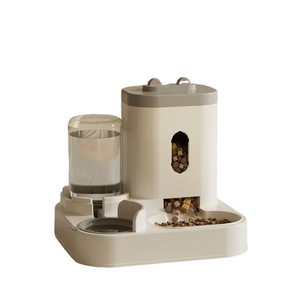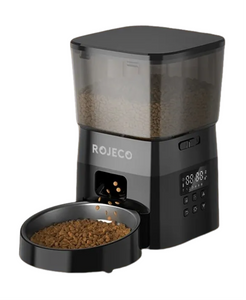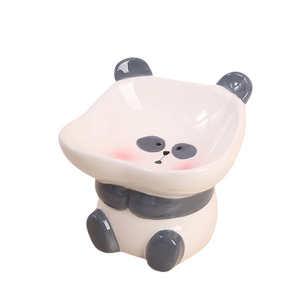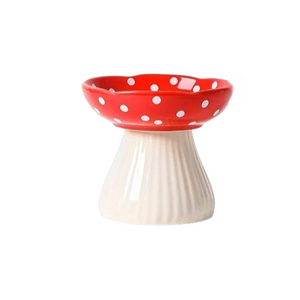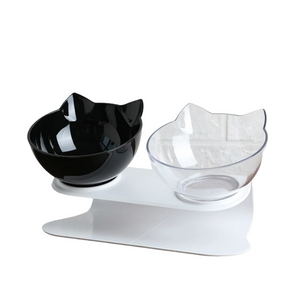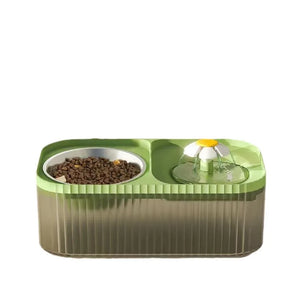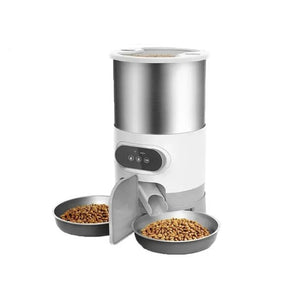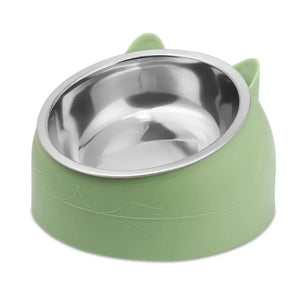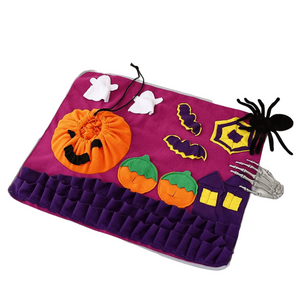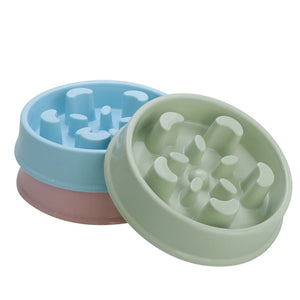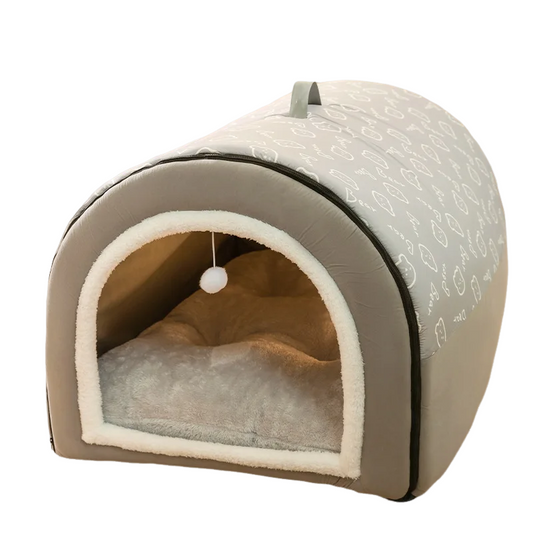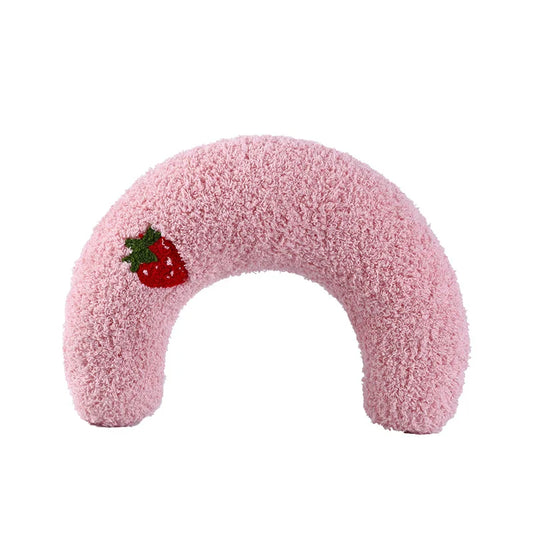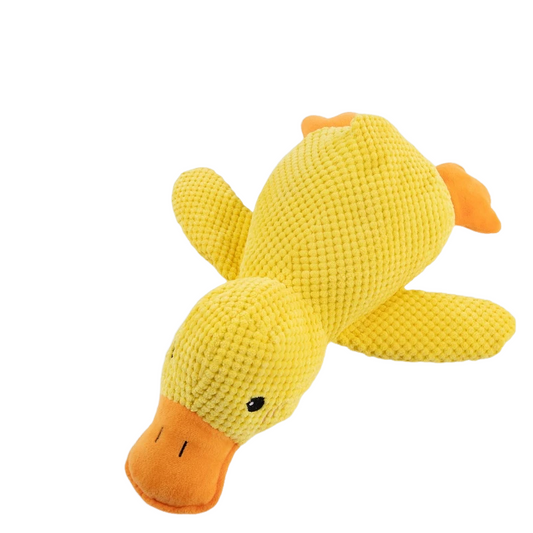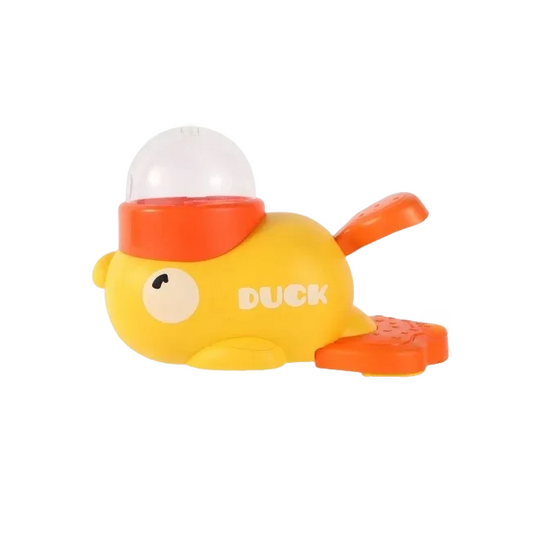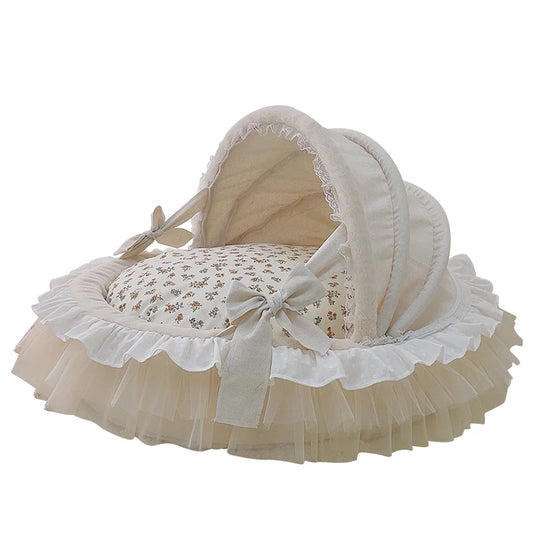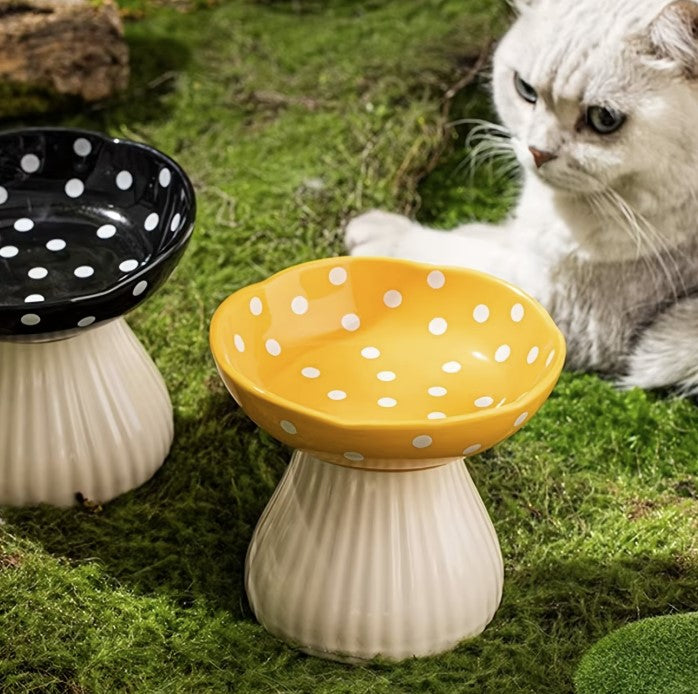
Pet Supplies for Cat and Dog Feeder
Share
In today's fast-paced world, ensuring your pets are well-fed and cared for can be a challenge. This is where innovative pet supplies like cat feeders and dog feeders come into play. These devices can simplify your life while ensuring your furry friends are happy and healthy. In this article, we will explore the benefits of using automated feeders, the different types available, and tips for choosing the right one for your pet.
The Importance of Automated Feeders
Automated feeders are more than just a convenience; they are a vital tool for maintaining a consistent feeding schedule for your pets. Whether you have a demanding job, travel frequently, or simply want to streamline your daily routine, an automated feeder can be a lifesaver. Here are some reasons why you might consider investing in one:
Consistency in Feeding
Pets thrive on routine, and an automated feeder ensures they receive their meals at the same time every day. This consistency is crucial not just for their happiness but also for their digestive health. Regular feeding times can help prevent digestive issues and promote a regular metabolism. Moreover, a set schedule can ease anxiety in pets prone to stress when their routine changes.
Portion Control for Health
Many feeders allow you to set precise portions, which is crucial for managing your pet's weight and overall health. Overfeeding can lead to obesity, which is a common issue in pets that can contribute to serious health problems. Automated feeders can help mitigate this risk by dispensing controlled amounts at scheduled times. This is particularly beneficial for pets on a weight management plan or those with specific dietary needs.
Reduced Stress for Owners
Knowing that your pet's feeding schedule is taken care of can relieve stress for both you and your pet. For pet owners with busy schedules, the peace of mind that comes from knowing your pet is fed is invaluable. Automated feeders can also reduce the guilt of leaving pets alone for extended periods, as they help ensure that your pet's dietary needs are consistently met.

Types of Cat and Dog Feeders
There are various types of feeders available on the market, each designed to cater to different needs. Understanding the options can help you make an informed decision.
Gravity Feeders
Gravity feeders are a simple and cost-effective solution. They work by using gravity to replenish the food bowl as your pet eats. This type of feeder is best suited for pets that can self-regulate their food intake without overeating.

Advantages of Gravity Feeders
Gravity feeders are incredibly easy to use and require minimal setup. They are an excellent choice for households with multiple pets, as they can accommodate varying dietary needs without the need for constant monitoring. These feeders also have fewer moving parts, reducing the likelihood of malfunctions and making them a durable choice for many pet owners.
Considerations for Gravity Feeders
While cost-effective, gravity feeders might not be suitable for pets prone to overeating. The constant availability of food can encourage pets to eat more than necessary, potentially leading to weight gain. Therefore, they are best for pets who have demonstrated the ability to self-regulate their eating habits.
Ideal Situations for Use
Gravity feeders are ideal for short trips away from home or for pet owners who are often busy but have pets that manage their diet well. They can also serve as a supplementary feeding option alongside more controlled methods, ensuring pets never run out of food.
Programmable Feeders

Programmable feeders are popular among pet owners who want more control over their pet's diet. These feeders allow you to schedule multiple meals throughout the day and control portion sizes. Some even come with smartphone apps for remote programming.
Scheduling and Control
Programmable feeders offer precise control over feeding times and portion sizes, allowing owners to tailor feeding schedules to their pet's specific needs. This feature is particularly beneficial for pets requiring small, frequent meals or those on a strict diet for medical reasons. Owners can adjust the feeding schedule as needed, providing flexibility and ensuring dietary compliance.
Remote Programming Benefits
Many programmable feeders come with smartphone connectivity, allowing pet owners to manage feeding schedules remotely. This feature is invaluable for those who travel frequently or work irregular hours. Remote programming ensures pets receive their meals on time, regardless of the owner's physical presence, reducing anxiety for both pets and their owners.
Advanced Features
Some programmable feeders offer additional features, such as voice recording capabilities, allowing owners to call their pets to meals. This feature can be comforting for pets missing their owner's presence. Additionally, certain models may provide notifications to the owner's phone, confirming feeding times and alerting them to any issues, such as low food levels.
Smart Feeders
Smart feeders take automation to the next level by integrating with your home's Wi-Fi. This allows you to control your pet's feeding schedule from anywhere using your smartphone. Some models include cameras, so you can check in on your pet during meal times.

Connectivity and Control
Smart feeders provide the ultimate in convenience and control, allowing pet owners to manage feeding schedules from anywhere. This connectivity ensures that even if plans change unexpectedly, pets' feeding routines remain unaffected. It also allows for real-time adjustments and monitoring, providing a dynamic feeding solution that adapts to both pet and owner needs.
Monitoring and Interaction
With integrated cameras, smart feeders enable owners to watch their pets during meal times, offering reassurance that everything is proceeding smoothly. This feature can also be used to monitor pet behavior, ensuring they are eating properly and not experiencing any issues. Owners can interact with their pets remotely, providing a sense of presence and reducing separation anxiety.
Comprehensive Management
Smart feeders often include detailed reporting features, offering insights into pets' eating habits and helping identify any potential health issues early on. This data can be invaluable when consulting with veterinarians, providing a comprehensive overview of a pet's dietary patterns. With smart technology, managing a pet's diet becomes a seamless part of everyday life.
Choosing the Right Feeder for Your Pet
Selecting the right feeder involves considering your pet's specific needs and your lifestyle. Here are some factors to keep in mind:
Pet's Eating Habits
If your pet tends to overeat, a programmable feeder with portion control might be the best choice. For pets that graze throughout the day, a gravity feeder could be more suitable.
Observing Eating Patterns
Understanding your pet's natural eating habits is key to choosing the right feeder. Some pets prefer to eat small amounts throughout the day, while others may have scheduled meal times. Observing these patterns will help determine whether a gravity feeder or a programmable option is more appropriate.
Adjusting for Special Needs
Certain pets may have special dietary requirements, such as those with medical conditions or those on a weight management plan. In such cases, a feeder that offers precise portion control and scheduling flexibility is essential. Customizing the feeding approach ensures that these unique needs are consistently met.
Behavioral Considerations
Consider any behavioral traits that might affect feeding. For instance, pets that are prone to anxiety might benefit from a feeder that mimics the presence of their owner through recorded voice messages. Understanding these nuances can significantly enhance the feeding experience for both pet and owner.
Your Schedule
Consider how often you are away from home. If you travel frequently or work long hours, a smart feeder might be worth the investment for peace of mind.
Balancing Convenience and Care
Your lifestyle plays a crucial role in feeder selection. For those with demanding schedules, investing in a feeder with remote capabilities can ensure consistent care without daily manual intervention. This balance allows pet owners to fulfill their commitments without compromising their pet's well-being.
Travel Considerations
For frequent travelers, a smart feeder with remote monitoring and control offers unparalleled peace of mind. Knowing that feeding schedules are maintained regardless of location can reduce travel-related stress and ensure pets remain healthy and happy in their owner's absence.
Daily Routine Integration
Select a feeder that seamlessly integrates into your daily routine. Whether it's through ease of use, maintenance requirements, or technological features, the right feeder should complement your lifestyle, making pet care an effortless part of your day.
Budget
Feeders range from basic gravity models to high-tech smart feeders, and prices can vary significantly. Determine your budget and find a feeder that meets your needs without breaking the bank.
Evaluating Cost vs. Benefit
When selecting a feeder, consider the long-term benefits against the initial cost. While advanced models with smart features may have a higher upfront investment, the convenience and peace of mind they offer can be invaluable. Assess how each feeder's features align with your pet's needs and your lifestyle.
Affordable Options
For budget-conscious pet owners, basic models like gravity feeders offer affordability without sacrificing functionality. While they may lack advanced features, these feeders can still provide consistent and reliable feeding solutions for pets with straightforward dietary needs.
Investment in Quality
Consider feeders as an investment in your pet's health and well-being. High-quality feeders, though more expensive, often offer better durability and features that support a balanced diet. This investment can lead to long-term health benefits for your pet, reducing veterinary costs associated with poor dietary management.

Benefits of Using Cat and Dog Feeders
Using a feeder can have several benefits for both you and your pet:
Health Management
Controlling portion sizes helps prevent obesity, a common issue in pets that can lead to health problems.
Prevention of Obesity
Automated feeders play a crucial role in preventing obesity by dispensing precise meal portions. Obesity in pets is linked to numerous health issues, including diabetes, joint problems, and heart disease. By regulating food intake, feeders help maintain an ideal weight, contributing to a longer, healthier life for your pet.
Encouraging Healthy Eating Habits
Consistent feeding schedules foster healthy eating habits, reducing the tendency for pets to overeat or beg for food. This regularity can also help stabilize blood sugar levels in pets, particularly important for those with diabetes or other metabolic conditions.
Supporting Special Diets
For pets on special diets, automated feeders ensure compliance with dietary restrictions. Whether it's a calorie-controlled diet or one tailored for specific health conditions, feeders provide the structure needed to adhere to prescribed meal plans.
Convenience
Automating feedings saves time and allows you to focus on other aspects of pet care.
Time-Saving Solutions
Automated feeders eliminate the need for daily meal preparation, freeing up time for pet owners to focus on other responsibilities. This convenience is especially valuable for households with multiple pets, streamlining the feeding process and reducing daily stress.
Simplifying Multiple Pet Feeding
For homes with multiple pets, automated feeders can manage different feeding schedules and dietary needs efficiently. This ensures that each pet receives the appropriate amount of food, reducing competition and stress during meal times.
Enhancing Flexibility
With feeders handling routine feeding tasks, pet owners gain more flexibility in their daily schedules. This freedom allows for spontaneous activities or changes in routine without compromising pet care.
Reduced Waste
Programmable feeders can help reduce food waste by dispensing only the amount your pet needs.
Minimizing Food Waste
By controlling portion sizes, automated feeders reduce the likelihood of leftover food, minimizing waste and saving money on pet food expenses. This efficiency is particularly beneficial for high-cost specialty diets, ensuring that every serving is used effectively.
Environmental Considerations
Reducing food waste also has positive environmental impacts, contributing to more sustainable pet care practices. Efficient use of resources aligns with broader efforts to minimize the ecological footprint of pet ownership.
Financial Savings
Over time, the reduction in food waste leads to significant cost savings. This economic benefit, coupled with the health advantages of portion control, makes automated feeders a valuable investment for conscientious pet owners.

Tips for Using Automated Feeders
To get the most out of your automated feeder, consider the following tips:
Regular Cleaning
Keep the feeder clean to prevent the growth of bacteria and mold.
Maintaining Hygiene
Regular cleaning of the feeder is crucial to prevent the buildup of bacteria and mold, which can lead to health issues in pets. A clean feeder ensures that the food remains fresh and safe for consumption, reducing the risk of gastrointestinal problems.
Cleaning Routine
Establish a routine for cleaning your feeder, including disassembling and washing all removable parts. Use pet-safe cleaning products and ensure all components are thoroughly dried before reassembling to prevent moisture-related issues.
Addressing Odor Concerns
Regular cleaning helps eliminate odors that might deter pets from eating. A fresh-smelling feeder encourages pets to eat on schedule, maintaining their dietary routine and promoting good health.
Monitor Your Pet's Weight
Use the feeder to maintain a healthy diet and regularly check your pet's weight to ensure the portion sizes are appropriate.
Weight Tracking
Regularly monitor your pet's weight to ensure they remain within a healthy range. Automated feeders support weight management by providing consistent portion sizes, but it's important to adjust as needed based on your pet's weight and activity level.
Adjusting Portions
Be prepared to adjust portion sizes as your pet's needs change, such as during periods of growth or changes in activity level. Consult with your veterinarian to determine the appropriate portions for your pet's specific circumstances.
Early Detection of Issues
Monitoring weight and eating habits can help detect potential health issues early. Sudden changes in weight or appetite may indicate underlying problems, and automated feeders can provide valuable data to share with your veterinarian.
Backup Plan
In case of power outages or technical issues, have a backup feeding plan in place to ensure your pet doesn't miss a meal.
Preparing for Emergencies
Having a backup feeding plan is essential to ensure your pet's needs are met in the event of technical failures or power outages. Keep a manual feeding schedule and supplies on hand, including a gravity feeder or pre-measured meals, to cover any disruptions.
Technology Troubleshooting
Familiarize yourself with basic troubleshooting steps for your feeder, such as resetting the device or checking connectivity. Being prepared for minor issues can prevent prolonged disruptions in your pet's feeding routine.
Emergency Contacts
Maintain a list of emergency contacts, such as friends or neighbors, who can assist with feeding in the event of extended outages or travel delays. This network provides additional peace of mind and ensures continuity of care for your pet.

Integrating Feeders with Pet Grooming and Food Selection
Automated feeders can be a part of a broader strategy to enhance your pet's well-being. Alongside regular grooming and selecting the right pet food, feeders contribute to a balanced lifestyle.
Pet Grooming
Regular grooming is essential for your pet's health. It keeps their coat clean and reduces shedding. Pairing grooming with a consistent feeding schedule ensures your pet looks and feels their best.
Benefits of Grooming
Regular grooming helps maintain your pet's skin and coat health, reducing shedding and preventing matting. It also allows for early detection of skin issues or parasites, ensuring timely intervention and treatment.
Grooming and Bonding
Grooming sessions provide an opportunity for bonding between you and your pet. This time spent together can strengthen your relationship and reinforce positive behaviors, contributing to your pet's overall well-being.
Grooming and Feeding Routine
Incorporating grooming into your pet's routine alongside feeding can create a structured, predictable environment that many pets find comforting. This consistency supports both physical and emotional health, fostering a balanced lifestyle.
Pet Food Selection
Choosing the right food is crucial. Make sure the food you use in the feeder is appropriate for your pet's age, size, and health conditions. High-quality pet food can improve your pet's health and longevity.
Nutritional Needs
Select pet food that meets the specific nutritional needs of your pet based on their age, breed, and health status. Consult with your veterinarian to ensure the chosen diet supports your pet's overall health and any specific medical conditions.
Quality Ingredients
Opt for pet foods made with high-quality ingredients, free from unnecessary fillers or artificial additives. Quality nutrition contributes to your pet's energy levels, immune system strength, and overall vitality.
Dietary Adjustments
Be open to adjusting your pet's diet as they age or as their health needs change. Regularly reviewing and updating their diet ensures they receive the best possible nutrition throughout their life stages.

Conclusion
Automated cat and dog feeders are invaluable tools for modern pet owners. They offer convenience, improve pet health through portion control, and provide peace of mind. By understanding the different types of feeders and considering your pet's specific needs, you can choose the right device to enhance your pet's quality of life. Combine this with proper grooming and a balanced diet, and you'll have a happy, healthy pet that thrives.
Investing in an automated feeder is not just about convenience—it's about ensuring your pet receives the best care possible, even when you're not there to provide it yourself. Embrace the technology and make informed choices that prioritize your pet's well-being, creating a harmonious living environment for both you and your furry companion.

